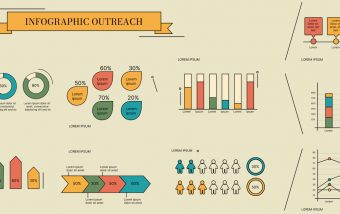Ahrefs Vs Semrush: Which Is The Better SEO Tool In 2025?
Apr 08, 2025

Apr 08, 2025

Mar 29, 2025

Mar 29, 2025

Mar 29, 2025

Mar 29, 2025

Mar 29, 2025

Mar 27, 2025

Mar 27, 2025
Sorry, but nothing matched your search "". Please try again with some different keywords.


The Search Engine Optimization industry is flourishing. Google – the dot com giant founded in 1998 – is by far the largest search engine in use today. Billions of Google searches are made every single day. The company has a whopping 94.2 percent share of the online search market. It should come as no surprise that any update to the Google search algorithm has sent shockwaves through the SEO community. Here are five algorithmic alterations that changed the way internet marketing was conducted.
We start our journey in 2011 when modern Search Engine Optimization was first kickstarted by Google’s Panda update. Google panda was developed in order to expose users to less ‘farmed’ marketing content. Users were complaining of low-quality, robotic websites appearing in their search results. The Panda algorithm was the first Google code that issued pages a quality ranking. SEO companies had to adapt: content had to be noticeably human and high quality. This led to increased use of freelance bloggers and quality writers. Companies like Click Intelligence offer high-quality blog posts as part of their broader SEO strategy.
Google continued to battle against the prominence of low-quality content in search results with its 2012 Penguin algorithm update. This update made the algorithm less favorable to websites that had been linked to from content farmed SEO articles. Although the amount of times a website is linked to still influences its search ranking, it no longer has the power it used to as an SEO strategy.
The pigeon was an algorithm update designed to localize results. Users were unhappy with the way that a Google search would often return endless streams of results for businesses and organizations distant to them. If a person wanted to find a hairdresser in their local area, their search might unearth thousands of results for hairdressers hundreds of miles away. The localization achieved by Google with the Pigeon update led to the rise of area-based SEO strategies targeting specific locations.
The BERT update in 2020 was one of the most radical overhauls that Google had ever made to its search algorithm. The idea behind the update was this: if the algorithm could understand the context of a search instead of just referencing it to previous searches, then the search engine could be far more useful when dealing with searches it had never seen before. About 15 percent of Google searches have never been seen by the algorithm before: they are completely unique. The BERT algorithm uses neural network-based machine learning in order to build an understanding of language that has less to do with keywords and more to do with context. Google claim that BERT is impossible to optimize for as its understanding of context means it is unable to be tricked or manipulated. SEO innovators have, however, come up with a solution. Writing blog posts and articles that genuinely address a possible query makes it more likely that BERT will rank such sites positively.
Read Also:
Abdul Aziz Mondol is a professional blogger who is having a colossal interest in writing blogs and other jones of calligraphies. In terms of his professional commitments, he loves to share content related to business, finance, technology, and the gaming niche.
View all Posts
Ahrefs Vs Semrush: Which Is The Better SEO To...
Apr 08, 2025
How Data-Driven Hiring Reduces Costs and Impr...
Mar 29, 2025
Why Headless CMS Works Well for EdTech Startu...
Mar 29, 2025
Building Topical Authority to Excel in Search...
Mar 29, 2025
The Impact of Professional Recruitment Servic...
Mar 29, 2025

